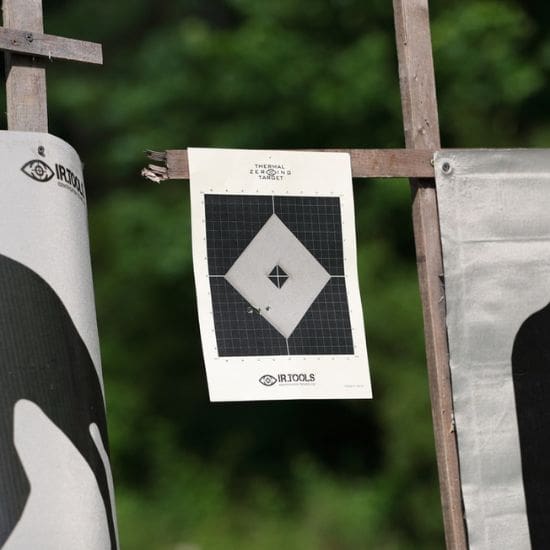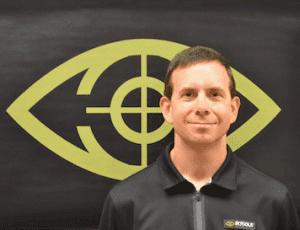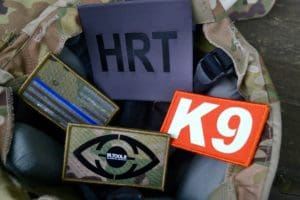Whatever your job, zeroing your thermal weapon sight to your weapon is a top priority. There are a few zeroing options for your thermal weapon sight.
- DIY (do it yourself)
- Ready-made zeroing target
Some do-it-yourself methods you are probably familiar with are:
- MRE heaters
- Two 9V batteries
- A small piece of No Power Tape
- A paper with a hole cut out of it
While the DIY are helpful they are clunky, time-consuming and accuracy is tough to read.
Ready-made zeroing is easy and accurate
Introducing… IR.Tools patented Upright thermal Zeroing Thermal target.
An easy, fast, accurate, ready-made zeroing target for accurate downrange shots.
Mount, Aim and Shoot! There is no need to adjust the angle for a good target contrast. The upright film provides a great contrast in every position.
IR.Tools™ Upright Thermal Zeroing Target:
- Quickly mounts on your vertical target backer and is ready for shots
- Shoot indoors/outdoors
- Target is consistently accurate.
- Combines the benefits of MRE heaters and passive thermal film, to produce a fast, easy, and environmentally friendly zeroing target.
The table below summarizes each option.
| Method | Advantage | Disadvantage | Hint |
|---|---|---|---|
| Ready-made Zeroing Targets |
Indoors, Outdoors, Cloudy day, Ready to shoot in minutes, Increased accuracy |
Upfront cost | The use of thermal pasters will extend target life. Outdoor training the target works without a heater. The heater is recommended for indoors and on cloudy days. |
| MRE Heaters | Distinct Hot Spot, Quick | Blooming Aim Point, limited time for shots | Have all weapons ready to zero so the aim point does not grow as fast |
| 9V Batteries | Distinct Hot Spot, Quick | Blooming aim point, limited time for shots | Have all weapons ready to zero so the aim point does not grow as fast, do not use lithium or hazardous batteries |
| No Power Film | Simple | Dependent on environment | Make sure the target backer is leaned back about 15 degrees |
| Paper with Hole | Simple | Difficult to see | Seek out a spot where the thermal energy behind the hole is different from ambient |


Since 2006, Tom has been the driving force behind IR.Tools, dedicated to delivering top-notch infrared solutions to the military, law enforcement, and sportsmen communities.
What began with a single infrared patch has blossomed into a comprehensive store featuring hundreds of IFF patches, vehicle IFF, an extensive suite of thermal training targets, and tools for drone pilots.
Beyond his innovative products, Tom is passionate about educating users on infrared technology and showcasing how advancements in IR can enhance their operations.
Tom holds an MS in Mechanical Engineering from the University of Maryland and an MBA from Regents University.

